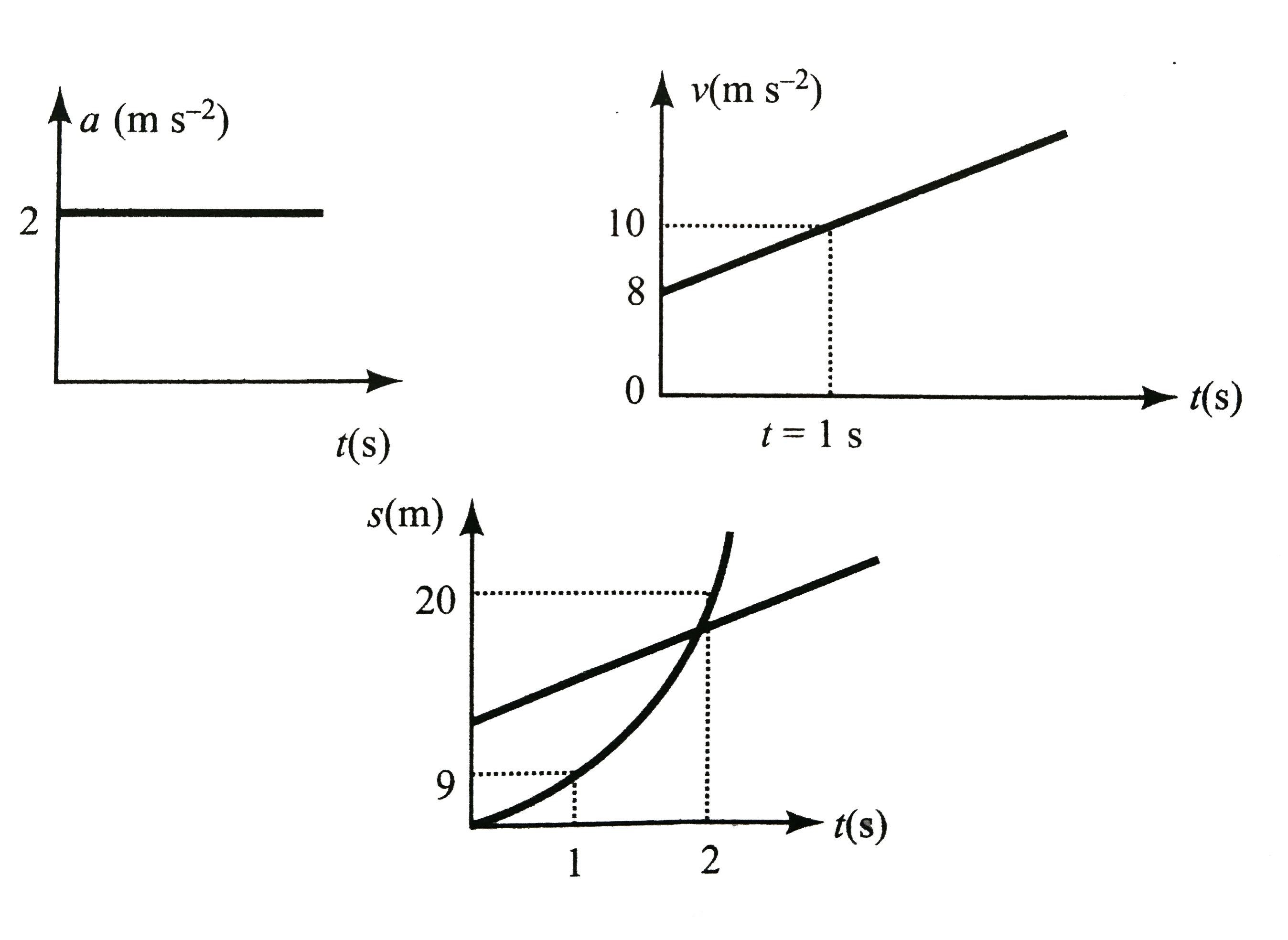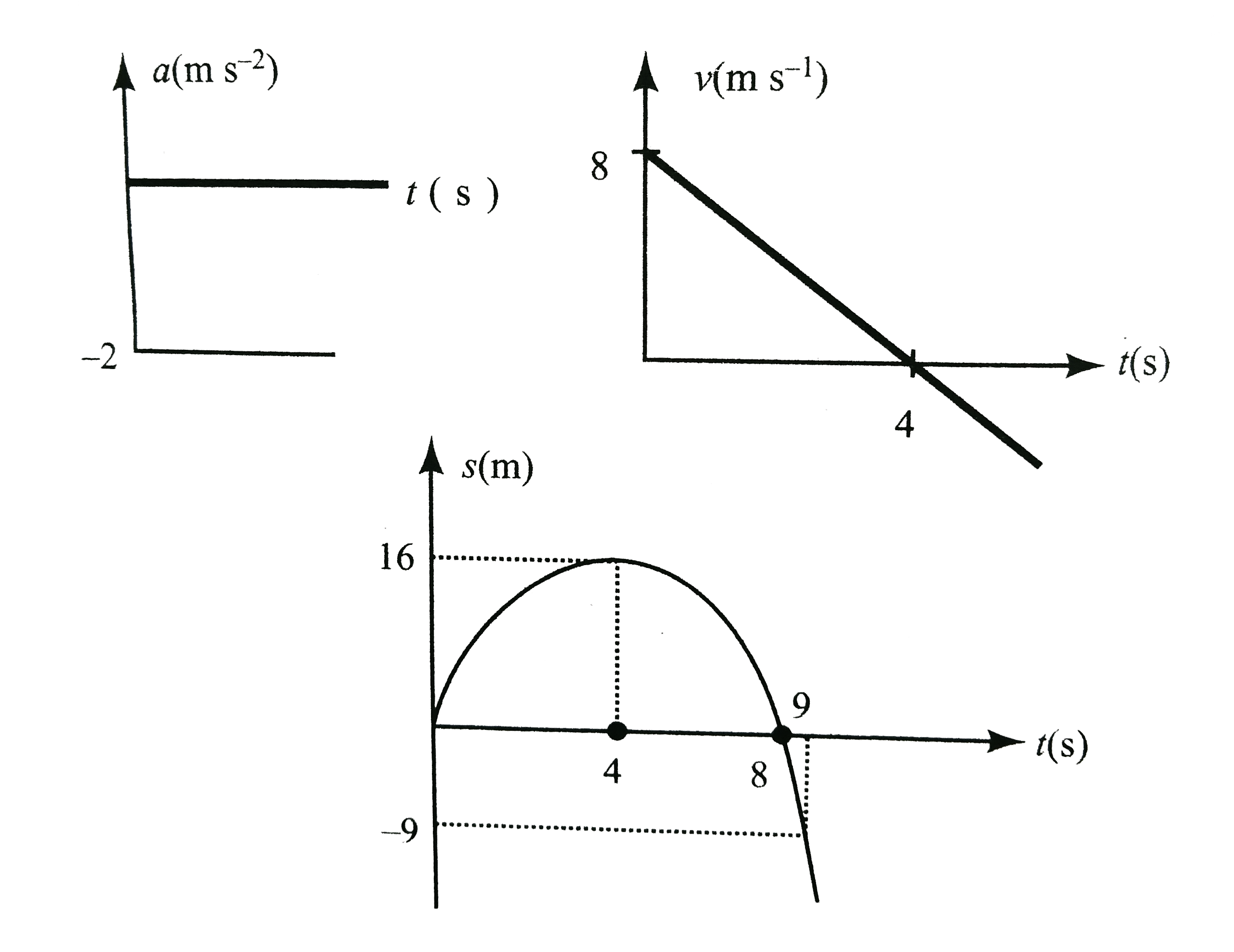A body starts at t=0 with velcoity u and travels along a straight linge. The body has a constant acceleration(a). Draw the acceleration-time graph from t=0 to t=10s for the following cases:
a. u=8ms−1, a=2s^(-2)<br>b.u=8 ms^(-1),a=−2ms−2
c. u=−8ms−1 ,a=2 ms^(-2)<br>d.u=-8ms^(-1),a=−2ms−2.
a. a=2ms−2,u=8ms1
v=u+at=8+2t,S=ut+12at2=8t+t2
 .
.
b. a=−2ms−2,u=8ms−1
v=u+at=−2t,S=ut+12at2=8t−t2
 .
.
c. a=2ms−2,u=−8ms−1
v=u+at=−82t,S=ut+12at2=−8t+t2
 .
.
d. a=−2ms−2,u=−8ms−1
v=u+at=−8−2t,S=ut+12at2=−8t−t2
 .
.
Related Playlists
- BOOK - CENGAGE PHYSICS ENGLISHCHAPTER - KINEMATICS-1EXERCISE - Subjective29videos
KINEMATICS-1
- BOOK - CENGAGE PHYSICS ENGLISHCHAPTER - KINEMATICS-1EXERCISE - Single Correct52videos
KINEMATICS-1
- BOOK - CENGAGE PHYSICS ENGLISHCHAPTER - KINEMATICS-1EXERCISE - Exercise 4.315videos
KINEMATICS-1
- BOOK - CENGAGE PHYSICS ENGLISHCHAPTER - GRAVITATIONEXERCISE - INTEGER_TYPE1videos
GRAVITATION
- BOOK - CENGAGE PHYSICS ENGLISHCHAPTER - KINEMATICS-2EXERCISE - Exercise Integer9videos
KINEMATICS-2
Similar Questions
A particle moves in a straight line with a constant acceleration. Its velocity changes from 20ms−1 to 35ms−1 while passing through a distance 150m in t seconds. The value of t is.
View SolutionA particle starts moving with initial velocity u=25ms−1 and retardation a=−2ms−2. Draw the velocity-time graph.
View SolutionA particle starts from the origin at t = 0 s with a velocity of 10.0ˆj m/s and moves in plane with a constant acceleration of (8ˆi+2ˆj)ms−2. The y-coordinate of the particle in 2 sec is
View SolutionA particle moves in a straight line with a constant acceleration. It changes its velocity from 10ms−1 to 20ms−1 while passing through a distance 135m in t seconds. The value of t is.
(a) 10 (b) 1.8 (c) 12 (d) 9View SolutionAt time t=0, a car moving along a straight line has a velocity of 16ms−1. It slows down with an acceleration of −0.5tms−2, where t is in second. Mark the correct statement (s).
View SolutionThe velocity of a particle are given by (4t–2) ms–1 along x–axis. Calculate the average acceleration of particle during the time interval from t = 1 to t = 2s.
View SolutionAn electric fan has blades of length 30 cm neasured from the axis of rotation. If the fan rotating at 120 rev/min. the acceleration of a point on the tip of the blade is
(a) 1600ms−2 (b) 47.4ms−2 (c) 23.7ms−2 (d) 50.55ms−2View SolutionA body is projected with a velocity 50ms−1. Distance travelled in 6th second is [g=10ms−2]
View SolutionA body starting from rest has an acceleration of 4ms−2 . Calculate distance travelled by it in 5th second.
View SolutionA body, initially at rest, starts moving with a constant acceleration 2 ms−2. Calculate : (i) the velocity acquired and (ii) the distance travelled in 5 s.
View Solution


